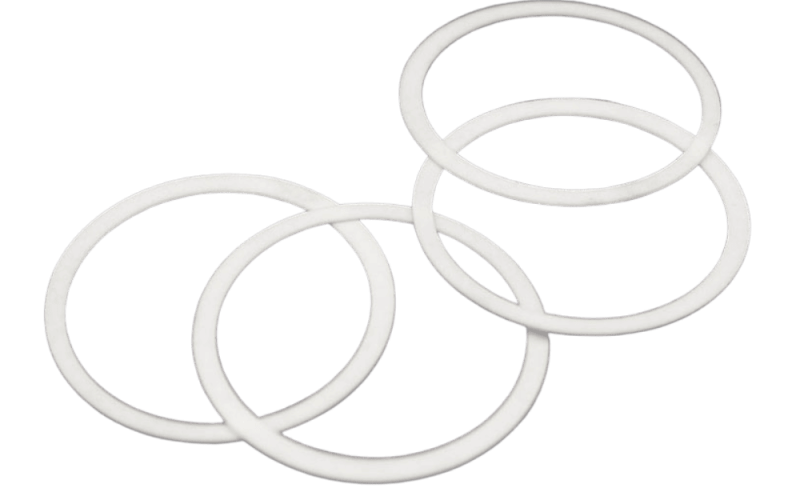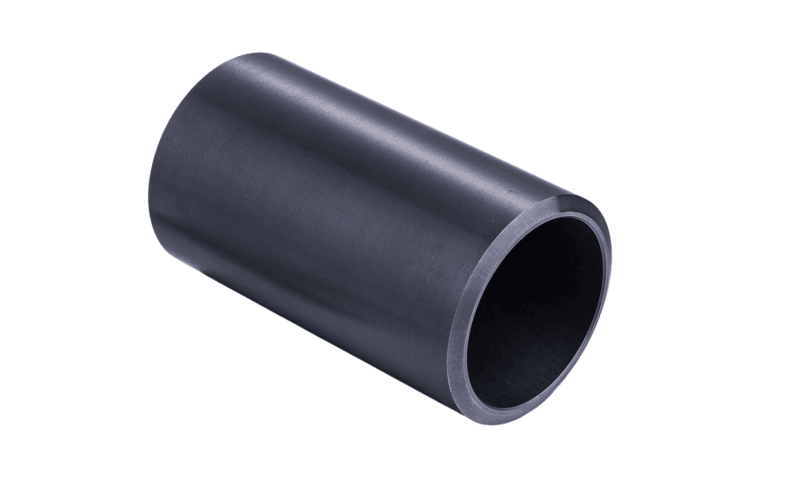Imagine a material so tough it can handle heat hotter than a volcano! High temperature ceramics do just that, staying strong at over 2000°C. These super materials are used in spaceships, power plants, and even tough tools. At Eshino Precision, we’re experts in these ceramics, and we’re excited to share how they work, where they’re used, and why they’re so cool. First, check out this table to see how hot these ceramics can get!
| Material | Melting Point (°C) |
|---|---|
| Hafnium Carbonitride | 4,110 |
| Hafnium Carbide | 3,958 |
| Tantalum Carbide | 3,768 |
| Zirconium Carbide | 3,400 |
| Silicon Carbide | 2,545 |
Introduction to High Temperature Ceramics
What Are High Temperature Ceramics?
High temperature ceramics are special materials that don’t melt or break even in super hot places. Unlike regular ceramics, like clay pots that crack at 650°C, these can handle over 2000°C! They’re made from stuff like borides, carbides, nitrides, and oxides of metals such as zirconium and hafnium. For example, zirconia ceramics are super strong in heat. These ceramics are used in places where things get really hot, like spaceship shields or nuclear reactors.
Why Are They Important?
These ceramics are game-changers because they stay tough in extreme conditions. They conduct heat well, resist sudden temperature changes, and don’t wear out easily. This makes them perfect for industries like aerospace, energy, and manufacturing. As Dr. Jane Smith, a materials scientist, says, “High temperature ceramics are the backbone of modern extreme-environment technologies, enabling innovations in space and energy.” At Eshino Precision, we use these materials to make ceramic tubes and other parts that last longer than metal.
How Do They Differ from Regular Ceramics?
Regular ceramics, like those used in dishes, can’t handle high heat or tough jobs. High temperature ceramics, however, are built for extreme tasks. They’re stronger, more heat-resistant, and don’t corrode easily. Want to learn more about the differences? Check out our guide on traditional vs. advanced ceramics.
Types and Classifications of High Temperature Ceramics
Borides: Heat Conductors
Borides, like zirconium diboride (ZrB₂), are awesome at moving heat. They have high thermal conductivity (75–105 W/mK) and don’t crack when temperatures change fast. This makes them great for things like spaceship heat shields. Our zirconia-based products often include boride properties for extra toughness.
Carbides: Super Hard
Carbides, such as silicon carbide (SiC), are incredibly hard and have melting points up to 4110°C. They’re used in cutting tools and aerospace parts because they don’t wear out easily. For instance, ceramic cutting tools made from carbides last way longer than metal ones.
Nitrides: Oxidation Fighters
Nitrides, like silicon nitride (Si₃N₄), resist rusting and stay stable in heat. They’re perfect for electronic parts and turbine blades. Our silicon nitride rods are built for tough jobs in hot environments.
Oxides: Great Insulators
Oxides, such as alumina (Al₂O₃), are excellent at blocking electricity and handling high temperatures. They’re used in furnace linings and sensors. Curious about oxides? Read our guide to oxide ceramics.

Silicon Carbide Tube: Built for Extreme Heat

Alumina Ceramic Seal: Reliable in Harsh Conditions
Key Applications of High Temperature Ceramics
Aerospace: Protecting Spacecraft
High temperature ceramics are superstars in aerospace. They protect spaceships during re-entry, where temperatures hit over 1650°C. Materials like ZrB₂ are used in heat shields and nose cones. Our ceramic plates are designed for similar high-heat tasks, ensuring safety and performance.
Energy: Powering the Future
In energy, ceramics like silicon carbide make nuclear reactors and solar power systems more efficient. They handle heat and corrosion, so parts last longer. For example, silicon carbide tubes are used in power plants to keep things running smoothly.
Manufacturing: Tough Tools
High temperature ceramics line furnaces and make super-strong tools. Alumina and silicon carbide are used in cutting tools that stay sharp for ages. These ceramics save money by reducing wear and tear, as explained in our post on reducing maintenance costs.
Defense and Electronics: Strong and Smart
In defense, ceramics like SiC are used in lightweight armor. In electronics, boron nitride acts as an insulator in high-power devices. Our ceramic substrates are perfect for these high-tech uses, offering reliability in tough conditions.
Manufacturing Techniques for High Temperature Ceramics
Hot Pressing: Strong and Dense
Hot pressing uses heat and pressure to pack ceramic powders tightly. This makes super strong parts, like our zirconia rods. It’s great for creating dense, high-performance ceramics that don’t break easily.
Spark Plasma Sintering: Fast and Precise
Spark plasma sintering (SPS) uses electric currents to sinter ceramics quickly. This keeps grains small, making materials stronger. It’s used for parts like silicon nitride seals, which need precision and toughness.
Chemical Vapor Deposition: Thin and Perfect
Chemical vapor deposition (CVD) creates thin ceramic coatings from gas. It’s ideal for precise parts, like coatings on ceramic nozzles. This method ensures parts are smooth and durable.
Additive Manufacturing: Cool Shapes
Additive manufacturing, like 3D printing, makes complex shapes, such as hafnium diboride parts for aerospace. Our guide to ceramic manufacturing explains how these techniques are changing the game.
Advantages and Challenges of High Temperature Ceramics
Why High Temperature Ceramics Shine
High temperature ceramics are amazing because they can handle super hot places where metals would melt. For example, they work at temperatures above 2000°C, while stainless steel melts at around 1400°C. They also resist thermal shock, which means they don’t crack when temperatures change fast. This is perfect for spaceships or power plants. Plus, they’re super hard, making them great for tools like ceramic cutting tools that stay sharp forever. Finally, they don’t rust or wear out in harsh chemicals, as explained in our guide on corrosion resistance.
Where They Struggle
However, high temperature ceramics aren’t perfect. They can be brittle, so they might crack if hit hard. This makes them tricky for some jobs, though new mixes are helping, boosting toughness by up to 20%. Also, they’re hard to shape because they’re so tough, which means making parts like zirconia tubes costs more. You need special tools, like diamond grinders, to cut them. Lastly, making these ceramics requires fancy machines, which raises prices. But don’t worry—research is making them stronger and cheaper!
Balancing the Good and Bad
Despite challenges, high temperature ceramics are worth it for tough jobs. Their heat resistance and durability make them better than metals in many cases. At Eshino Precision, we’re working on ways to make ceramics tougher, like using high-strength ceramics. As Dr. Jane Smith, a materials expert, notes, “The unique properties of high temperature ceramics make them irreplaceable, despite their challenges, in pushing technological boundaries.”
Market Insights and Statistics for High Temperature Ceramics
How Big Is the Market?
The high temperature ceramics market is growing fast! In 2025, it’s worth about $6 billion, and experts think it’ll hit $9.27 billion by 2032. That’s a growth rate of 7–8% every year! Why? Because industries like aerospace, energy, and electronics love these ceramics. For example, aerospace applications use ceramics for heat shields, and new energy systems need them for solar power.
| Year | Market Size (USD Billion) |
|---|---|
| 2022 | 4.67 |
| 2025 | 6.17 (estimated) |
| 2032 | 9.27 (projected) |
Who’s Leading the Way?
North America has a big chunk of the market (35% in 2024), thanks to its aerospace and defense industries. But Asia Pacific is catching up fast because of electronics and car-making. Our silicon nitride ceramics are popular in these regions for their strength and heat resistance.
What’s Driving Growth?
New tech, like jet engines and solar plants, needs high temperature ceramics to work better and last longer. Plus, companies are finding ways to make ceramics cheaper, which helps the market grow. Want to know more? Check out our post on how ceramics impact industries.
Recent Developments in High Temperature Ceramics
Ceramic Matrix Composites (CMCs)
Scientists are making high temperature ceramics even better with ceramic matrix composites (CMCs). These mix ceramics with other materials to make them tougher. For example, oxide-oxide CMCs are used in aerospace for stronger parts. Our ceramic plates benefit from these advances, lasting longer in tough conditions.
High-Entropy Ceramics
High-entropy ceramics are a new idea where multiple metals are mixed to make ceramics super strong and heat-resistant. They’re still in research but could be used in missiles or reactors soon. This is exciting for industries needing high-temperature resistance.
3D Printing Magic
Additive manufacturing, like 3D printing, is changing how we make high temperature ceramics. It creates complex shapes, like ceramic nozzles, without wasting material. This makes parts cheaper and faster to produce, as explained in our manufacturing guide.
Nanotechnology Boost
Nanotechnology makes ceramics stronger by working with tiny particles. This helps parts like silicon carbide rods handle more heat and stress. It’s opening doors for military and aerospace uses, making ceramics even more awesome.
Case Studies: Successful Applications of High Temperature Ceramics
Space Shuttle Heat Shields
The Space Shuttle used high temperature ceramics to survive re-entry heat above 1650°C. Ceramics like zirconium diboride protected its nose and edges, keeping astronauts safe. Our zirconia seals use similar tech for tough jobs.
Gas Turbine Efficiency
In gas turbines, silicon carbide ceramics let engines run hotter, saving fuel and cutting emissions. This is huge for planes and power plants. Our silicon nitride tubes are built for these high-heat environments.
Chemical Processing Sensors
Chemical Processing Sensors
A UK company swapped plastic sensors for ceramic ones in a super hot, high-pressure system. The ceramics didn’t break or corrode, making the system more reliable. Our chemical industry solutions include parts like ceramic valves for similar tasks.

Silicon Nitride Seal: Tough for High Heat

Zirconia Tube: Built to Last
Future Outlook for High Temperature Ceramics
Tougher Ceramics
Scientists are working on making high temperature ceramics less brittle. New mixes, like composites and nanotechnology, could make parts like ceramic bushings even stronger. This means they’ll work in more places, like hypersonic planes.
Cheaper Production
Making ceramics is expensive, but new methods like 3D printing are cutting costs. This could make parts like ceramic discs more affordable. Our cost-saving guide shows how ceramics save money in the long run.
New Uses
High temperature ceramics are heading to cool new places, like advanced nuclear reactors and next-gen solar plants. They could even power super-fast hypersonic vehicles. Our new energy solutions are ready for these future techs.
Going Green
Making ceramics greener is a big goal. Using renewable energy in factories cuts pollution. At Eshino Precision, we’re exploring eco-friendly ways to make ceramic plates, aligning with global green goals.
FAQ: Common Questions About High Temperature Ceramics
What Are High Temperature Ceramics?
High temperature ceramics are materials that stay strong above 1000°C, often up to 2000°C or more. They include borides, carbides, nitrides, and oxides, like alumina.
What Are Their Key Properties?
They’re super heat-resistant, strong, and don’t rust. They also handle quick temperature changes and are hard, perfect for tough jobs. Learn more in our properties guide.
Where Are They Used?
You’ll find them in aerospace, energy, manufacturing, defense, and electronics. Think spaceship shields or ceramic substrates for electronics.
How Do They Compare to Other Materials?
They beat metals in heat and rust resistance but can be brittle. Compared to plastics, they’re way tougher in heat. See our comparison guide.
How Are They Made?
They’re made with hot pressing, spark plasma sintering, chemical vapor deposition, or 3D printing. Our manufacturing guide explains it all.
What Are Their Challenges?
They’re brittle, hard to shape, and costly to make. But new tech is fixing these issues, making ceramics like silicon nitride rods more practical.
Are There New Advancements?
Yes! Composites, high-entropy ceramics, and 3D printing are making ceramics better. Our tech guide covers these updates.
What’s the Market Outlook?
The market’s growing at 7–8% a year, hitting $9.27 billion by 2032. Aerospace and energy are big drivers, boosting demand for ceramic tubes.
Conclusion: Why High Temperature Ceramics Matter
High temperature ceramics are the heroes of tough jobs, from protecting spaceships to powering clean energy. Their ability to handle extreme heat and stay strong makes them a must-have in industries like aerospace, energy, and manufacturing. At Eshino Precision, we’re proud to create parts like zirconia rods and silicon carbide tubes that help businesses thrive. As new tech makes ceramics tougher and cheaper, their future is brighter than ever.
Ready to power your projects with high temperature ceramics? Contact us at Eshino Precision to explore our ceramic solutions or learn more about how ceramics can save you time and money!
External Resources
Ready to Transform Your Engineering Solutions?
No industrial challenge is too complex for Eshino. From precision ceramic rods and advanced bushings to customized nozzles and other high-performance components, we engineer solutions that combine exceptional durability, thermal resistance, and precision to meet your specific needs. Whatever your industry demands, Eshino delivers tailored expertise you can trust.

